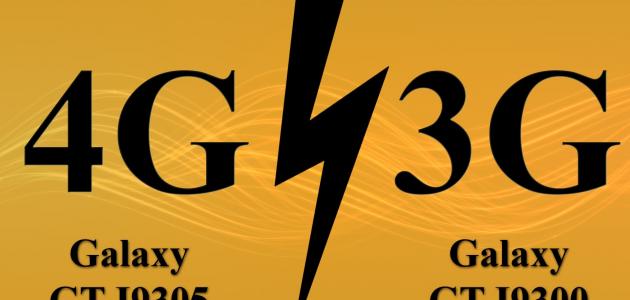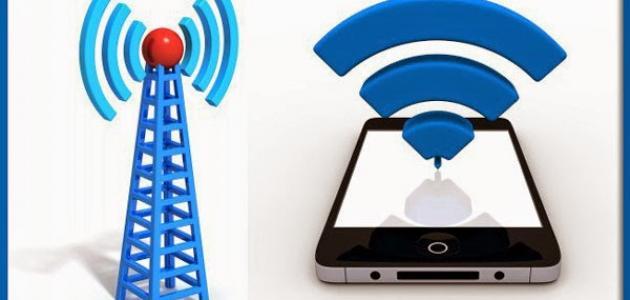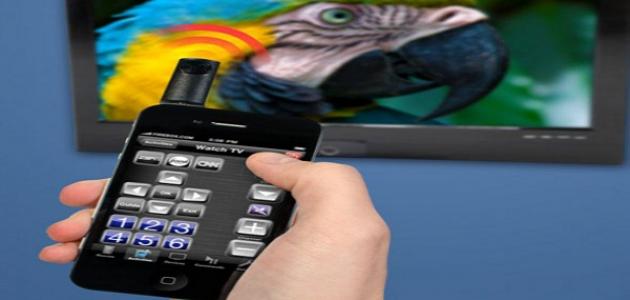Third generation technology
The word third generation (in English: 3G) expresses the third generation of wireless communication technologies, and is superior to the previous wireless technologies, as it has a high speed in data transmission, and it also ensures that the connection remains effective even when roaming and moving, and other advantages. Third generation technology is used more in mobile phones; This is to provide a means to connect to the Internet, to download and upload data, or to make voice or video calls (in English: Video calls); This is because it is available anywhere, unlike Wi-Fi technology, which requires the caller to be close to the router.
The structure of this technology is based on the standards of the International Telecommunication Union (in English: ITU) within the frameworks of global mobile communications programs under the code IMT-2000, and provides the user with services of a wide range. The third generation technology is a set of technologies and standards, including W-CDMA, wireless local area networks (WLAN), Cellular radio, and so on. In order for the phone to be able to connect to the Internet using the third generation technology, it must support this technology from the ground up, and this technology requires a subscription with a service provider, and communication takes place via a chip (in English: SIM Card).
Data transmission speed
The speed of data transmission in the third generation technology ranges between 128 kilobits (in English: kilobits) per second and 384 kilobits per second, as it is between 128 kilobits per second and 144 kilobits per second if the connected device is moving quickly, but if the device is moving slowly; That is, if the device holder is walking, the speed will be at its maximum, reaching 384 kilobits per second.
Read also:Who is the founder of Samsung?Technical features
By comparing the third generation technology with the previous technologies, it is distinguished from it by the following:
- The third generation technology is much faster in transmitting data than the previous technologies.
- Better quality in live audio and video broadcasts.
- The ability to watch TV channels via the Internet.
- The ability to surf the Internet at high speeds.
Fourth generation technology
The term fourth generation (in English: 4G) expresses the fourth generation in wireless communication technology, and it was provided for the first time by the American company Sprint at the beginning of 2009 AD, and this technology has become available by most telecommunications companies in most regions United States of America. The fourth generation technology is the latest technology from the third generation technology, and it is up to 10 times faster than it. The need for faster technology came due to the development of cellular devices and tablets and their need for fast communication technology. These devices are now able to broadcast video and audio clips live.
100G technology is not available for all devices; It requires that the device used supports the possibility of exchanging data at a speed of at least XNUMX megabits per second. Telecommunications companies can provide fourth generation service through Long Term Evolution technology (in English: LTE), or through WiMax technology (in English: WiMax), but in both technologies, OFDM technology is used to package and send data, and fourth generation technology also includes a group Of other technologies and standards, including the following:
Read also:How was the iPhone made?- CDMA2000 EV-DO technology
- Multiple inputs and multiple outputs (in English: MIMO).
- OFDMA technology
Naming disputes
There are many disputes between telecom companies about naming the fourth generation technology by this name. If the definition of the fourth generation technology is considered according to the International Telecommunication Union, it can be known that there is no telecom company that provides real fourth generation service. The term fourth generation has come to be used for marketing purposes, as it expresses the network that provides download speeds that exceed the speeds of the third generation technology, and this is the most important thing from the perspective of telecom companies for their customers.
Fast data transfer
The speed of data transmission in the fourth generation technology varies from one company to another, so downloading data is generally faster than uploading data in most companies.Where the download speed reaches 12 megabits per second in the American company Verizon, which uses long-term development technology to provide the fourth generation service, and the upload speed reaches 5 megabits per second. As for Sprint, which uses WiMax technology, the download speed for the fourth generation service reaches 10 megabits per second, and the upload speed reaches 1 megabit per second.
Technical features
The fourth generation technology has many advantages, including the following:
- Support for many broadband services, such as the possibility of live broadcasting of the image, in addition to support for interactive multimedia, the Internet, and so on.
- It depends on Internet protocols (in English: IP).
- High speed in addition to large capacity.
- Low cost to download a single bit.
- Supports all known network technologies such as Bluetooth, WCDMA, and 802.11 standards.
- Support for older wireless communication systems, such as the third generation technology.
- The availability of many services based on the principle of quality of service (in English: Quality of Service).
Comparison between the third generation and the fourth generation
If the download speed of the third generation technology is compared to the download speed of the fourth generation, ignoring all factors that may affect the connection and download speed, the speed of the fourth generation technology is ten times faster than the speed of the third generation technology (assuming that the quality of the connection of both networks is at its best); The download speed in the fourth generation technology reaches 1 gigabyte per second, while the third generation technology reaches 100 megabits per second, and as for the data upload speed, it reaches 500 megabits per second for the fourth generation technology, and 5 megabits per second for the third generation technology. The radio frequencies used in broadcasting the fourth generation technology range between 2 GHz and 8 GHz, while for the third generation, they range between 1.8 GHz and 2.5 GHz.
Read also:What is a PUK code








